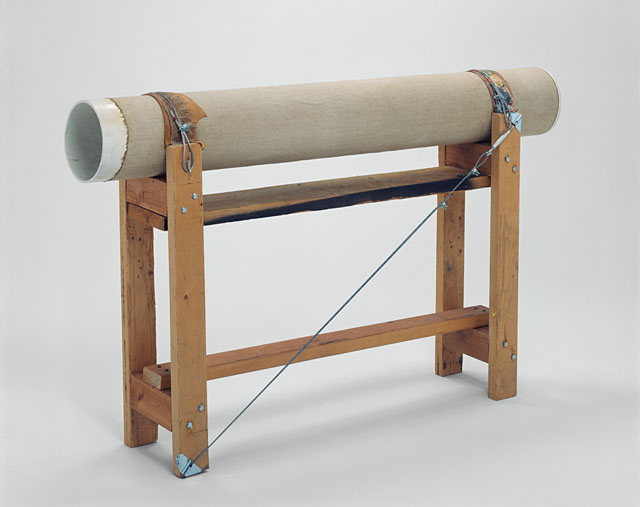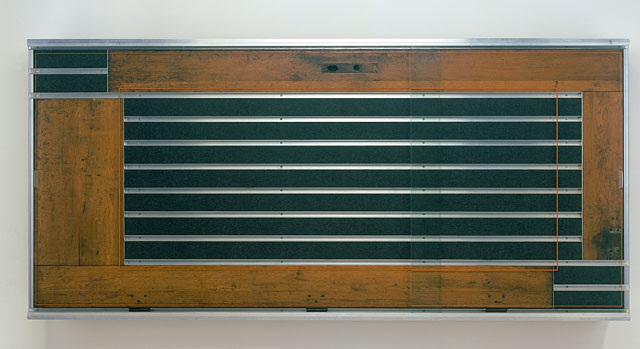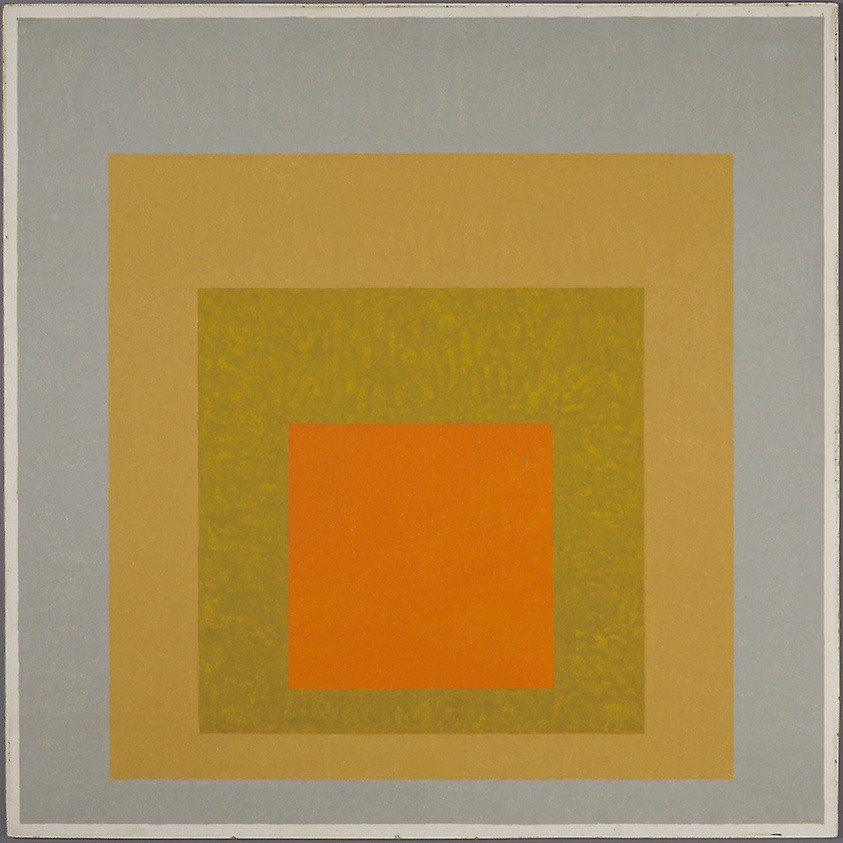In Weimar, Reinhard Mucha created a detached commentary on 20th-century German history by encapsulating and neutralizing emotionally charged materials within a vitrine. The sculpture includes a door—found in a junk shop on the site of a World War II bunker—encased behind glass panes, upon which lines are painted with an orange pigment often used on rail cars. The paint calls attention to the glass, which invites observation but creates a separation between object and viewer. The artist first exhibited Weimar with other vitrines named after German towns with intersecting railways. A recurring theme in his work, trains signify not only the industrialization of Germany but also the Holocaust. Here, Mucha attempted to contain and intellectualize his homeland’s conflicting, emotional legacy of genocide, geographical division, and cultural achievement.


